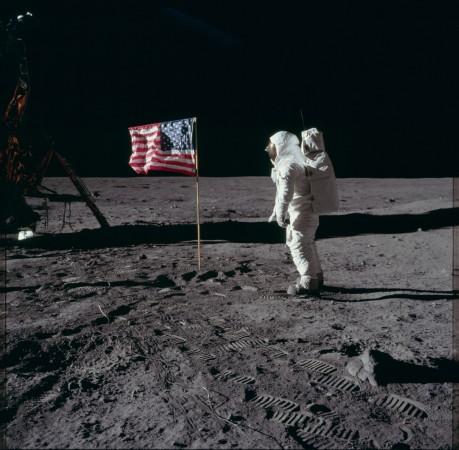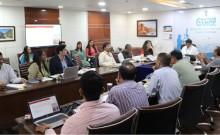
Conspiracy theorists have long been claiming that NASA has never taken humans to the moon, and in the course of years, these skeptics have put forward various anomalies in lunar photos taken by the Apollo 11 mission to prove their theory. Supporters have kept claiming that the erstwhile Soviet Union would not have remained silent if it was not true.
Russia has finally decided to step in and verify the authenticity of NASA's moon-landing missions. Dmitry Rogozin, the head of the Russian space agency Roscosmos has revealed that the country's upcoming lunar mission be tasked with verifying whether NASA's past moon landings were real.
Rogozin made this revelation on Saturday during a live video interaction on Twitter. During the session, one of the viewers asked Rogozin whether NASA had landed on moon ever in history. While answering the question, the Russian space agency chief smirked and shrugged, and later made it clear that their upcoming mission will try to find the answer for this billion dollar question.
"We have set this objective to fly and verify whether they've been there or not," said Dmitry Rogozin.
It should be noted that conspiracy theories surrounding NASA's moon landing are very popular in Russia. As per these conspiracy theorists, NASA has faked the moon landing to proclaim their dominance on space, thus overpowering the Soviet Union in front of the world. In 2015, a former spokesman for the Russian Investigative Committee urged the authorities to conduct a formal investigation to unveil the exact truth behind NASA's moon landings.
During the same period, the Soviet Union too tried to land on the moon, but they were compelled to abandon the lunar missions after four of their experimental moon rockets failed.
A few months ago, Streetcap1, a UFO researcher who died recently under mysterious circumstances had spotted the reflection of a man on the visor worn by one of the astronauts while on the surface of the moon. Interestingly, the image of the man on the surface of the moon had shown him not wearing the safety backpack which astronauts used to wear during space missions.

















